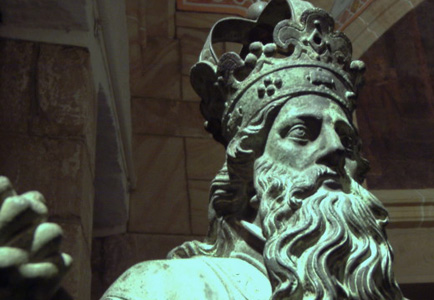
Charlemagne became the symbol of Aachen
Many cities viewed Charlemagne as their founder, for example Frankfurt am Main, Zurich and Florence. Medieval Aachen used Charlemagne as an argument in their gradual endeavours to gain civic rights for their city. Charlemagne became the symbol of the newly founded city-state Aachen. He not only guaranteed the city prestige and privileges, but also brought prosperity. The coronations of the German kings at Charlemagne's tomb were a significant economic factor, as were the later established pilgrimages.
During the Reformation, Charlemagne also became the symbol of the Catholic Counter-Reformation, which gained the upper hand in Aachen. The statue of Charlemagne erected on Aachen's Market Place in 1620 symbolises the victory of the Catholic side. Today, it is the most popular image of Charlemagne in Aachen.
Bronze fountain statue, 1620
Aachen Town Hall, Coronation Hall
(The statue on the Market Place fountain is a replica of the original in the Town Hall.)


